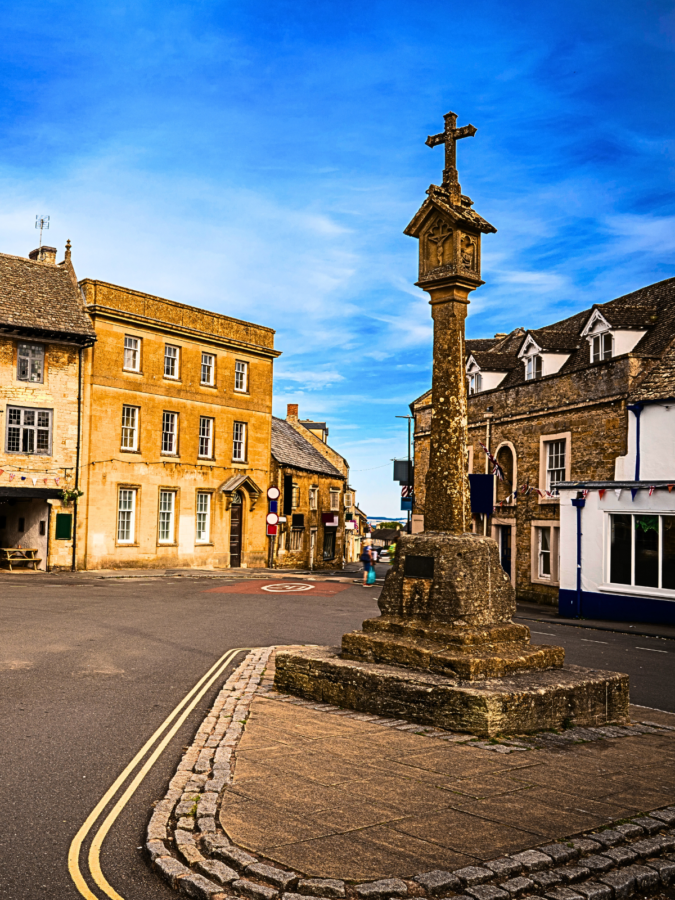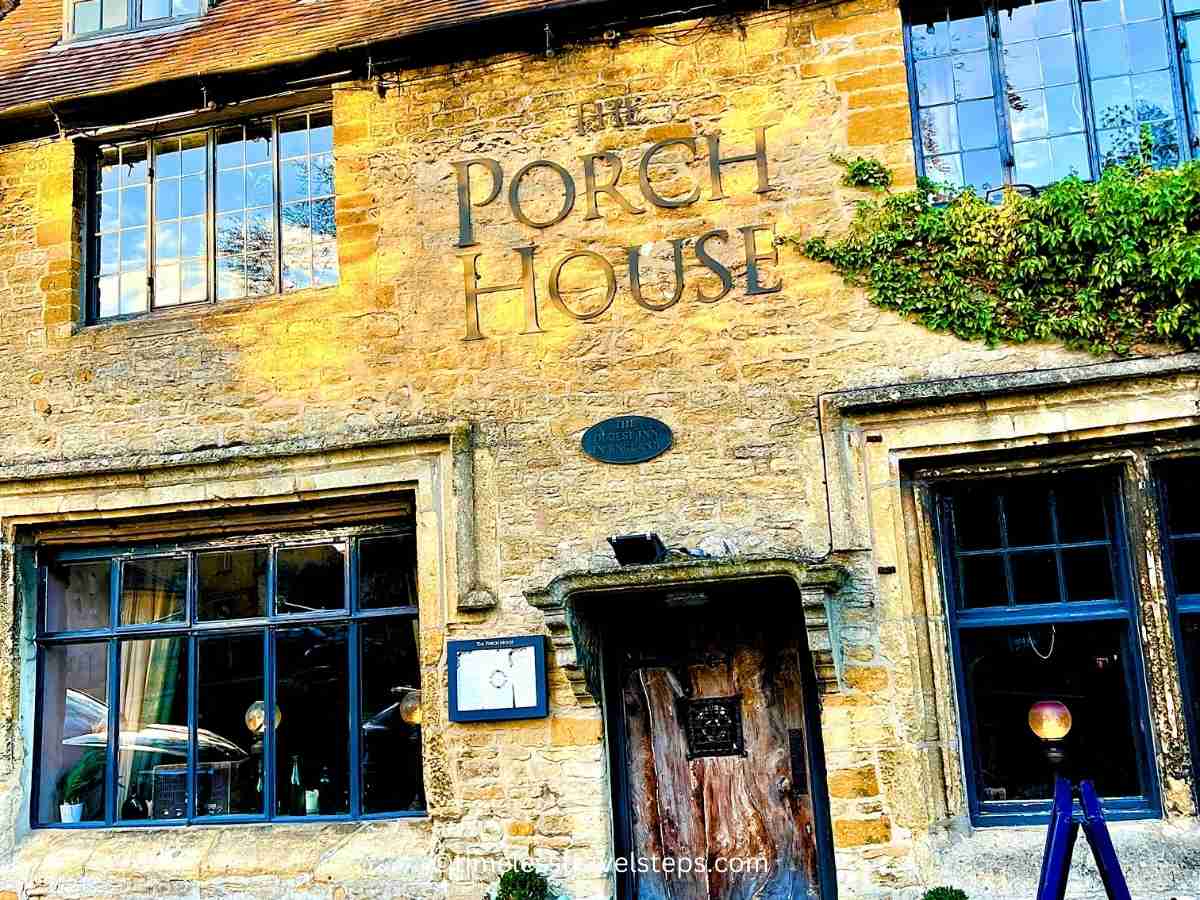The Fascinating History of Stow-on-the-Wold + Must-Know Facts for Tourists
8 min readStow on the Wold, where the wind blows cold” … so an 18th century rhyme goes, describing this beautiful historic market town that sits on a hill, 244 m (800...
The post The Fascinating History of Stow-on-the-Wold + Must-Know Facts for Tourists appeared first on Timeless Travel Steps.
Stow on the Wold, where the wind blows cold”
… so an 18th century rhyme goes, describing this beautiful historic market town that sits on a hill, 244 m (800 ft) above sea level, the highest town in the Cotswolds. Something you might experience on a winter’s day.
A destination steeped in rich history and charming architecture, Stow-on-the-Wold has captivated visitors for centuries with its myriad of splendid things to do. From its ancient origins and medieval market roots to its role in the English Civil War, Stow-on-the-Wold’s history offers a fascinating journey through time, a must-visit for history enthusiasts and tourists alike.
Whether you’re exploring its historic buildings, browsing antique shops, or enjoying the vibrant cultural scene, Stow-on-the-Wold is a perfect escape to the English countryside. In this post, you’ll find an overview of its long and rich history, aiming to enrich your visit to this adorable town on the hill.
Timeless Travel Steps is supported by our readers. If you purchase through an affiliate link on my site, at no cost to you, I may earn a commission from qualifying purchases. Please read our Disclosure for further information.

The Incredible History and Meaning of Stow-on-the-Wold, Gloucestershire
Stow-on-the-Wold is a historic market town situated in the Cotswolds, Gloucestershire, England. Known for its picturesque beauty and charming architecture, this town has a rich and fascinating history that attracts tourists from around the world. Here is an overview of its incredible history, along with some interesting facts for visitors.
Ancient Origins
Officially founded by the Normans as a result of its converging routes, Stow-on-the-Wold’s origin can be traced back to the Iron Age. The area around Stow has evidence of ancient Roman settlements, with the town itself believed to have been established during the Saxon era.
There have been settlers in Stow since the Iron Age and the hilltop location was originally the site of a fort during the Iron Age. There are evidence of remains of Iron Age settlements and Bronze Age burial mounds between Stow and the nearby village of Maugersbury.
Following the Iron Age, the Romans arrived in Britain around 43 AD. They established settlements and roads, including the Fosse Way, which runs through the region, enhancing trade and connectivity.
After the decline of Roman rule around the 5th century, the Saxons settled in the area. The town’s name, originally “Edwardstowe,” reflects its Saxon heritage, named after a missionary hermit named Edward.
The Normans conquered England in 1066. They significantly influenced Stow-on-the-Wold, constructing buildings and establishing the town as a key market centre. The Norman legacy includes the continued development of trade and architecture in the region.
These successive waves of settlers and conquerors each left their mark on Stow-on-the-Wold, contributing to its rich historical tapestry.
These early settlers laid the groundwork for its strategic importance, utilizing fertile land and establishing key routes that shaped its development.
However, the most prominent early settlers were the Romans who built significant crossing routes and meeting points to boost trade.

What does ‘Stow on the Wold’ Mean
The town’s name reflects its Saxon heritage.
The name “Stow-on-the-Wold” has roots in Old English and Saxon history. “Stow” derives from the Old English word “st?w,” meaning meeting place, reflecting its long history as a site of human activity.
According to local legend, when the Saxons settled here, a missionary named Edward lived as a hermit at a well on the south side of town, giving rise to the name “Edwardstowe.” “Stowe” is derived from the Saxon word and simply means ‘holy place.’ The word “wold” comes from the Old English “wald,” loosely translating to ‘rolling hill or high ground.’ Hence, “Stow-on-the-Wold” literally translates to “the holy place on the hill.”
Medieval Market Town
Stow-on-the-Wold became prominent during the medieval period, particularly in the 12th century when it was granted a charter to hold markets and fairs.
In 1107, Henry II granted Stow a charter to hold a weekly market. This is when he changed the name from Edwardstow to Stow on the Wold. The market was held every Thursday in the space where the three ‘WAY’ met and it is this area that has developed through the years and forms the present day Market Square.
The town’s location on major trade routes, such as the Fosse Way, made it a vital center for commerce. The town’s prosperity was largely due to the wool industry, with the Cotswolds being a major wool producing region.
The annual fairs, especially the wool fairs, attracted traders from across the country, leading to the town’s prosperity. The Market Cross in the town square, erected during this period, symbolizes its significance as a market hub.
From 1154 through to 1485, Stow thrived through the wool trade. In 1476, Edward IV granted Stow with a charter to two five-day annual fairs, on May 12 and October 24. The weekly market together with the annual fairs grew to be important events, with Stow’s importance also.
The events were held to trade sheep and wool products. It brought wealthy wool merchants to Stow-on-the-Wold.
They set up homesteads and Almhouses and channeled a lot of money to the community. They contributed to the building of the church tower at St Edward’s Church, which is a landmark in Stow.
The wealth from wool trade funded the construction of many of Stow’s beautiful buildings and positioned it as a key player in England’s economy.

Tudor and Stuart Periods: The Battle of Stow-on-the-Wold
Stow-on-the-Wold played a significant role in the English Civil War. It was here, on March 21, 1646 where the Battle of Stow-on-the-Wold took place. The Royalists army were marching through Stow to meet King Charles but were overwhelmed by the Parliamentarians.
Legend has it that the street ran red with blood where ducks could swim through. This street later became known as “Digbeth Street”, meaning “duck’s bath”. More than a thousand soldiers were imprisoned in St Edward’s Church, before being marched to Gloucester, marking the end of significant military operations in the war.
There is an English Civil War monument in the Market Square to mark this sombre event.
Georgian and Victorian Era
During the Georgian and Victorian eras, Stow-on-the-Wold continued to thrive as a market town. The architecture from this period, including charming townhouses and the Market Cross, remains well-preserved, adding to the town’s historical charm.
The rise of the railway in the 19th century brought more visitors, increased tourism, further boosting the town’s development.
Modern Day: Stow-on-the-Wold Today
Today, Stow-on-the-Wold is a popular tourist destination, known for its historic buildings, antique shops, and vibrant cultural scene. The town retains its historic charm while offering modern amenities, making it a perfect blend of the old and new.
Today, Stow-on-the-Wold is a thriving market town, although with a population of under 2,000*, it suggests a large village. At the heart of it, Stow is a town with an important retail and business community.

History Around Every Corner: Stow-on-the-Wold’s Rich Heritage
Historic Coaching Inns
Stow-on-the-Wold has several historic inns, including the Porch House, which claims to be one of England’s oldest inns, established in 947 AD. These inns provided essential rest stops for travellers and merchants, fostering the town’s reputation as a hospitable marketplace.
Market Cross
The Market Cross in the town square, erected in the medieval period, symbolizes the town’s historical significance as a market centre. It served as a focal point for local trade and gatherings, reflecting the town’s vibrant economic and social life over the centuries.
Ancient Yew Trees
The yew trees flanking the north door of St. Edward’s Church are believed to be over a thousand years old. These ancient trees enhance the church’s mystical appeal and stand as living witnesses to the town’s long history.

The Fosse Way
Since Saxon times, Stow has been an important crossing route and a meeting point. Stow’s unique position on a hilltop and its location on the junction of the Roman roads, The Jurassic Way, the Salt Way and the Roman Fosse Way led it to become an important trading centre.
The Roman Fosse Way runs straight over Stow, and this used to lead to Londinium or London, connecting to Exeter, Lincoln, Bath, Cirencester and Leicester. These routes still exists to this day.
Stow Fair’s Origins
The Stow Horse Fair, continuing today, dates back to the 12th century. Established as a market for livestock and goods, the fair remains a vibrant testament to the town’s enduring role in regional trade and community life.
Stow-on-the-Wold’s rich history, from its ancient origins to its role in major historical events, makes it a fascinating destination for visitors interested in England’s past
FAQs
“Wold” comes from the Old English word “wald,” meaning a rolling hill or high ground. In the context of Cotswold, it refers to the hilly terrain.
Stow-on-the-Wold’s history dates back to prehistoric times, with significant development during the Saxon era, making it approximately 1,500 years old.
There are local legends about tunnels under Stow-on-the-Wold, but no substantial evidence confirms their existence.
Yes, Stow-on-the-Wold has a traditional market, continuing its historic role as a market town. It takes place weekly, every Thursday.
Stow-on-the-Wold does not have its own railway station. The nearest station is in Moreton-in-Marsh.
Yes, Stow-on-the-Wold is a historic market town located in the Cotswolds, Gloucestershire.
Discover More of the Cotswolds, England
St Edward’s Church Door, Stow on the Wold, Gloucestershire
Guide to Lacock Abbey Harry Potter and Talbot Photography Museum, Lacock, Wiltshire
Top Things to do in Castle Combe, Wiltshire
Best Things to do in Bourton-on-the-Water
Driving and Parking in Bourton-on-the-Water: Where to Park;
Splendid Things to do in Stow-on-the-Wold;
Charming Things to do in Bibury, Cotswolds;
Arlington Row, England’s Most Photographed Street;
Quaint Things to do in Burford, Oxfordshire;
Reasons Burford Deserves Your Cotswold Weekend;
5 Must-Visit Historic Villages Near Burford, Oxfordshire.
Exploring the Rich History, Vibrant Culture, and Legends of Burford, Oxfordshire.
in sum…
Stow-on-the-Wold, with its rich tapestry of history, offers a captivating glimpse into England’s past. From its ancient origins and medieval market prominence to significant events like the Battle of Stow-on-the-Wold, the town’s historical landmarks, such as the ancient yew trees, Market Cross, and historic coaching inns, each tell a unique story.
As a tourist in Stow, you can explore these enduring symbols, understand the strategic importance of the Fosse Way and the vibrant traditions like the Stow Horse Fair. Stow-on-the-Wold stands as a testament to centuries of historical and cultural evolution, making it a must-visit destination for every visitor.
Happy and Safe Travels Always, Wherever Travel Takes You, xx
Pin ‘History of Stow-on-the-Wold’ It to Pinterest.





